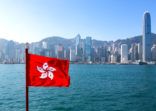“In the US, the distribution model is based on fixed fees,” Montanari said. “There’s a large presence of IFAs who charge a certain fee to clients and it’s in the interest of the IFA to invest in the cheapest possible products. They tend to massively use ETFs.”
In Asia, the advisory business is still commission based, and therefore advisors have less incentive to use cheaper products like ETFs, he added.
Other factors restrict the take-up. The products have had a longer development cycle in the US than in Asia. In addition, the fact that Asia is a multi-jurisdictional market creates complications, added Frank Henze, who used to run State Street’s ETF business in Asia Pacific.
“Asia is very fractured and the various countries have differing regulations and currencies. By comparison, the US and Europe are large markets with uniform regulation and currencies.”
The lack of a single unified market means there’s no pan-Asian dominant force to educate the market.
“Big international providers make a bigger effort to distribute ETF products in the US and Europe because the markets are bigger and less complicated than Asia,” Henze said.
Strong portfolio addition
Performance of ETFs, which are typically passive funds that track an index but trade like a stock, has been strong. About one-third of the roughly 1000 ETFs $100m or larger and for sale in Asia returned 40% or more over the past three years, according to FE data.
When he was at State Street, Henze said there was increasing demand annually in the region for the instruments.
ETFs are used on the private banking side in discretionary portfolio management, and for institutional clients and sovereign wealth funds.
As well, insurance companies in the region are particularly active buyers of ETFs and asset managers are looking at ETFs for structuring retail products, he said. Multi-asset solutions are being delivered through the use of ETFs.
“It’s hard to find a client in Asia who doesn’t use ETFs, though they are still a small proportion of anyone’s portfolio.”
Fund house interest
Many Asian investors have historically tended to buy ETFs in the US due to the larger product offering and liquidity, Montanari explained.
“But the problem is that the US charges 30% tax on dividends, which is significant. So Asian investors started investing in European ETFs that are often Luxemborg-domiciled and don’t have dividend tax issues.”
Asia is about 10% of the global ETF market, which is dominated by the US, he said. However, interest among fund houses seems to be increasing.
Earlier this year, Vanguard unveiled three ETFs in Hong Kong including the SAR’s first ETF providing investors with exposure to European equities.
MacQuarie is looking into increasing ETF products in Asia. Amundi recently announced plans to open an Asian ETF business next year.
In the past three years, Chinese fund managers have also successfully launched China-focused ETF products in New York and London, added Jackie Choy, strategist at Morningstar. “In Asia, ETFs with underlying China exposure have been the most popular among investors.”
Investment bank catalyst
The fee-based advisory model is widely expected to come to Asia, and when that happens, ETF takeup will accelerate in the region, said Montanari.
Henze believes that investor interest will continue to increase over the next couple years.
“More market makers are looking to move into space. It will remain a distribution-focused activity that big players use to distribute their global offering, which is mainly US-based products.”
The push to sell more ETFs across Asia is mostly through intermediaries like investment banks and specialist trading firms than by local asset managers, Henze said.
Investment banks have more product available than individual asset managers who have not become regional yet.
“A Hong Kong firm or Japan firm is active only in their own geographies. It’s rare to find a pan-Asia-Pacific provider of ETFs.
“So a provider of ETFs might not drive the ETF agenda as hard as investment banks or trading firms, who see increasing client demand on the transaction and flow side.”
———————————————————————————————————-
Top performing Singapore-registered ETFs over the last three years:

Top performing Hong Kong-registered ETFs over the last three years:

















